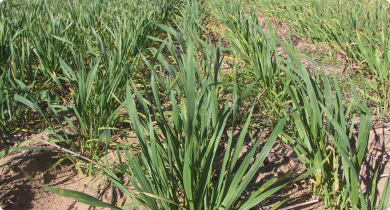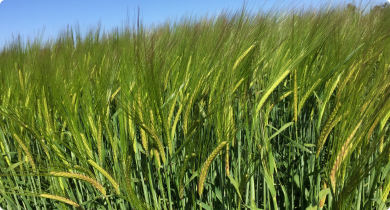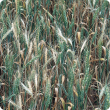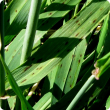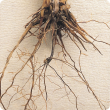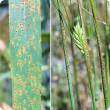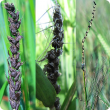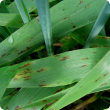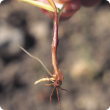Barley
The Department of Primary Industries and Regional Development is involved in all aspects of the barley value chain from pre-breeding research to support the development of new barley varieties through to barley agronomy research, development and extension, barley grain quality assessments and market intelligence work.
Barley is Western Australia’s second largest cereal crop after wheat – accounting for 25% of the state’s total grain production and delivering just over $1 billion in barley grain and malt export earnings each year.
Thirty per cent of barley produced is delivered as malting grade destined for the international beer industry with the remaining 70% delivered as feed grade – the majority of which is sent to the Middle East.
Filter by search
Filter by topic
- (-) Remove Diseases filter Diseases
- Pests, weeds & diseases (32) Apply Pests, weeds & diseases filter
- Fungi (23) Apply Fungi filter
- Wheat (14) Apply Wheat filter
- Crop diseases (14) Apply Crop diseases filter
- Control methods (12) Apply Control methods filter
- Oats (10) Apply Oats filter
- Chemicals (10) Apply Chemicals filter
- Grains research & development (8) Apply Grains research & development filter
- Mechanical, physical and cultural (5) Apply Mechanical, physical and cultural filter
- Pests (4) Apply Pests filter
- Canola (4) Apply Canola filter
- Nematodes (3) Apply Nematodes filter
- Fungicides (3) Apply Fungicides filter
- Lupins (3) Apply Lupins filter
- Weeds (2) Apply Weeds filter
- Viruses & virus-like (2) Apply Viruses & virus-like filter
- Crop weeds (2) Apply Crop weeds filter
- Pulses (2) Apply Pulses filter
- Pest insects (1) Apply Pest insects filter
- Production & postharvest (1) Apply Production & postharvest filter
- Soil acidity (1) Apply Soil acidity filter
- Soils (1) Apply Soils filter
- Soil nutrients (1) Apply Soil nutrients filter
- Pastures (1) Apply Pastures filter
- Pasture management (1) Apply Pasture management filter
- Bacteria (1) Apply Bacteria filter
- Breeding & varieties (1) Apply Breeding & varieties filter
- Climate, land & water (1) Apply Climate, land & water filter
- Grains Research & Development (1) Apply Grains Research & Development filter
- Managing soils (1) Apply Managing soils filter


